Deconstruyendo al Rey de los Ladrones
Profundicemos en el último juego de ZeptoLab, King of Thieves. Lanzado en febrero de 2015, este juego ha despertado mi interés. Aunque todavía no está en el primer puesto, el atrevido diseño del juego merece una mirada.
En mi opinión, este es un juego que merece tener éxito. Se siente único y tiene todos los elementos que conforman un juego de gran recaudación. ZeptoLab ha tomado lo que funciona en los juegos de simulación y estrategia y lo aplica a un género totalmente nuevo y a un público objetivo completamente nuevo.
Este enfoque es lo que creo que deberían adoptar más diseños de juegos nuevos para tener éxito en la AppStore.
El tono
El tema de King of Thieves es “Super Meat Boy” combinado con “Choque de clanes”.
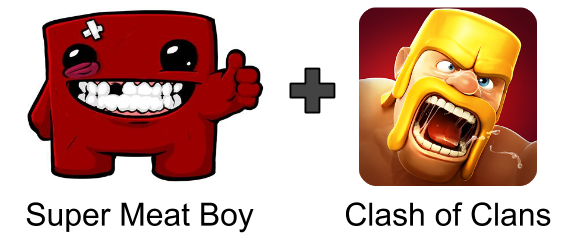
El juego principal es un juego de plataformas con un solo botón. Tu ladrón (la pequeña y linda sombra negra) corre automáticamente hacia la izquierda o hacia la derecha. Puedes tocar para activar un salto en la dirección actual. También puedes saltar de las paredes para invertir la dirección de los jugadores. ZeptoLab ha logrado renovar los juegos de plataformas clásicos para dispositivos móviles. Con controles de un toque, se siente nativo en el móvil. Con reglas simples, resulta expresivo y ofrece a los jugadores muchas opciones. La jugabilidad es simple y muy transparente sobre lo que hiciste mal cada vez que mueres. Esto crea un juego central muy adictivo.
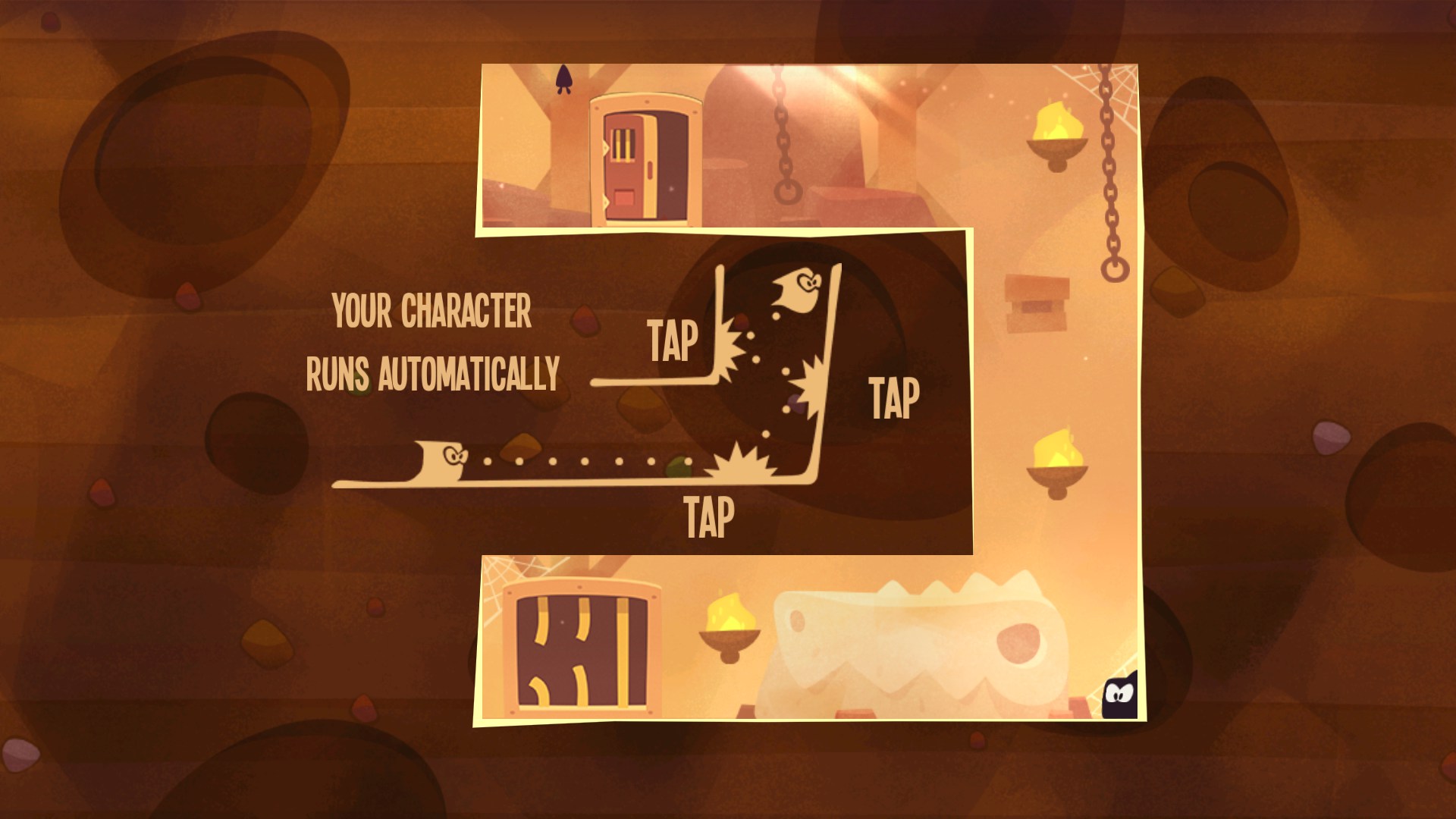
El objetivo de cada nivel es llegar a un cofre del tesoro. Pasa del “punto a” al “punto b” evitando trampas. Golpear una trampa restablecerá tu progreso desde el principio. Este castigo le da al juego la "sensación de Super Meat Boy". Las razones para perder siempre son claras para el jugador y hay muy poca fricción al reiniciar. El jugador vuelve a la acción tan pronto como lo matan, lo que hace que sea extremadamente adictivo seguir intentando superar un nivel.
El meta (los sistemas de progresión fuera del juego de plataformas principal) es una repetición de Choque de clanes. Han logrado modificar la fórmula estándar de Choque de clanes para convertirla en algo que funcione muy bien con el juego de plataformas principal. Al igual que Clash of Clans, King of Thieves pide a los jugadores que gestionen dos capas de juego: ataque y defensa. En el ataque, el jugador juega niveles de estilo plataforma para robar oro y gemas (más sobre esto más adelante). En defensa, el jugador debe diseñar una base que defienda de los ataques de otros jugadores. Las sesiones de los jugadores se centran en robar la mayor cantidad de botín de jugadores de todo el mundo para mejorar sus propias habilidades.
El bucle de sesión
Para deconstruir, me gustaría centrarme en el diseño de la sesión. Para hacer esto, necesitamos dividir el juego en su ciclo de acción diario: las acciones repetitivas que realiza el jugador para progresar en el juego. Evaluemos cada paso con respecto a cómo afecta la forma en que se sienten las sesiones.
Mirando hacia atrás en la publicación sobre Sesiones Flexibles , el principio clave del diseño de sesiones es crear una curva decreciente de valor para las sesiones por día y para la duración de la sesión. Solo para reiterar: la primera regla es que la primera sesión del día debe resultar más impactante que la segunda, tercera o cuarta vez que el jugador regresa. A partir de la quinta sesión, esto debería darle un valor mínimo al jugador.La segunda regla es que la duración de la sesión también debe tener una curva de valor decreciente. Con el tiempo, un jugador debería sentir naturalmente que regresar más tarde durante el día sería más beneficioso. Estas dos reglas conforman un diseño de sesión sólido.
Entonces, ¿cómo ejecuta esto King of Thieves?
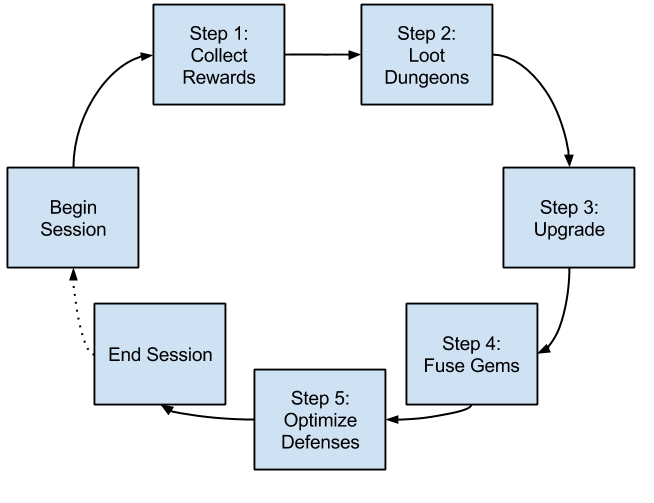
Paso 1: Recoge las recompensas básicas
Cada día, el jugador comienza su sesión recogiendo las recompensas de su mazmorra:
- Recoge oro de su alijo. (Temporizador corto opcional)
Este es un mecánico de llenado de baldes. Permitir a los jugadores recolectar del alijo tantas veces como deseen durante el día. - Recoge oro de las defensas exitosas. (Temporizador corto)
Para asegurarse de que los jugadores se sientan bien con sus defensas, los jugadores recolectan oro por cada intento fallido de otros jugadores en su mazmorra. Si bien no es mucho oro, ciertamente se siente bien cuando regresas después de una larga ausencia. - Recoge gemas generadas (temporizador prolongado)
Las gemas se generan en el mapa en un ciclo más largo (varias horas).
Puede ver aquí que estos tres ciclos de recompensa tienen cada uno una duración de temporizador variada, lo que permite un diseño sólido de la sesión. Temporizadores cortos para valorar más el regreso por día, pero temporizadores más largos para recompensar el juego diario. Al utilizar recompensas de diferente duración, el jugador tiene un claro valor decreciente por regresar varias veces a lo largo del día.
Paso 2: saquea mazmorras con llaves
Una vez que el jugador ha recogido todas sus recompensas, quiere maximizar su efectivo para su sesión actual. Siempre existe la amenaza de que otros jugadores en el mundo roben los recursos que tengan cuando abandonen el juego.
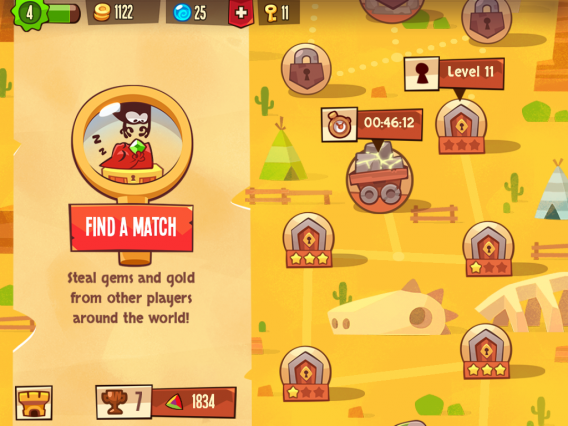
Los jugadores pueden elegir entre PvP (izquierda) o PvE (derecha)
Para hacer esto, los jugadores saquean las mazmorras de otros jugadores (niveles PvP) o los niveles creados por diseñadores en un mapa (niveles PvE). Los niveles creados por jugadores contienen gemas de alto valor. Mientras que los niveles PvE tienen recompensas de oro más altas (a veces), desbloquea nuevas minas generadoras de gemas y nuevas mazmorras a las que el jugador puede moverse. Este sistema funciona porque tanto PvE como PvP benefician al jugador de diferentes maneras.
King of Thieves innova con su mecánica de ritmo. En lugar de usar energía o vidas como en la mayoría de los juegos, usan "Claves". Las teclas se recargan como en la mayoría de los juegos con el tiempo. La diferencia clave es que la cantidad de energía (o claves) que el jugador necesita gastar para ingresar a un nivel es aleatoria.
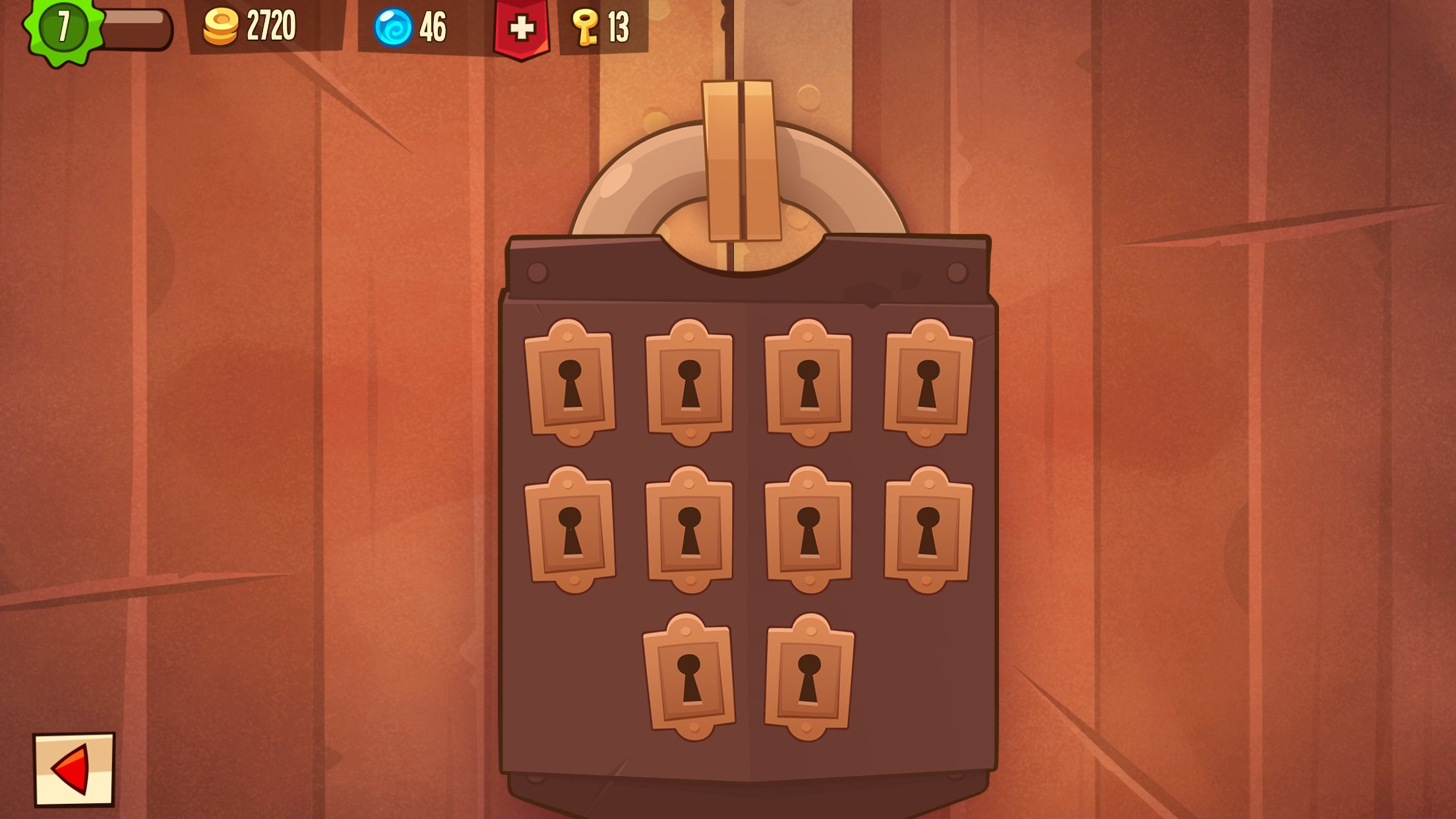
Los jugadores pueden elegir un candado. Cada intento cuesta una llave. Sólo uno de ellos consigue entrar. Energía aleatoria.
The player chooses locks on a screen with their keys. If they get the right key, they enter the level. If they choose the wrong one, they must spend another key. The game supplies the player with more than the usual amount of energy (10+). However, some levels can use 1 key to enter, others up to 15 keys to enter. Why would ZeptoLab design a system like this?
This system doesn’t please all player types. I’m convinced ZeptoLab benefits more from this system than the player experience. Not an easy choice I’m sure as a designer, but these sacrifices are sometimes necessary in a free to play game.
From the onset, this system feels arbitrary, just like an energy system. The player’s ability to loot is capped by some tacked on economy. Compared to Clash of Clans, Clash’s pacing mechanics make sense: you will eventually run out of troops to loot opponents. King of Thieves just says you run out of “keys”. Could this be fixed if the player had to “craft” keys in their base? Could this be fixed if the player had to build clones of their shadow player to start looting? Maybe. Overall I’m not a fan of the system, but I understand the benefits for ZeptoLab.
Because the system is randomized, players can try for one more level even if the player only has 1 or 2 more keys left. If they get lucky, this feels great. They get to play the level with little cost. If they fail, they are presented with this screen:
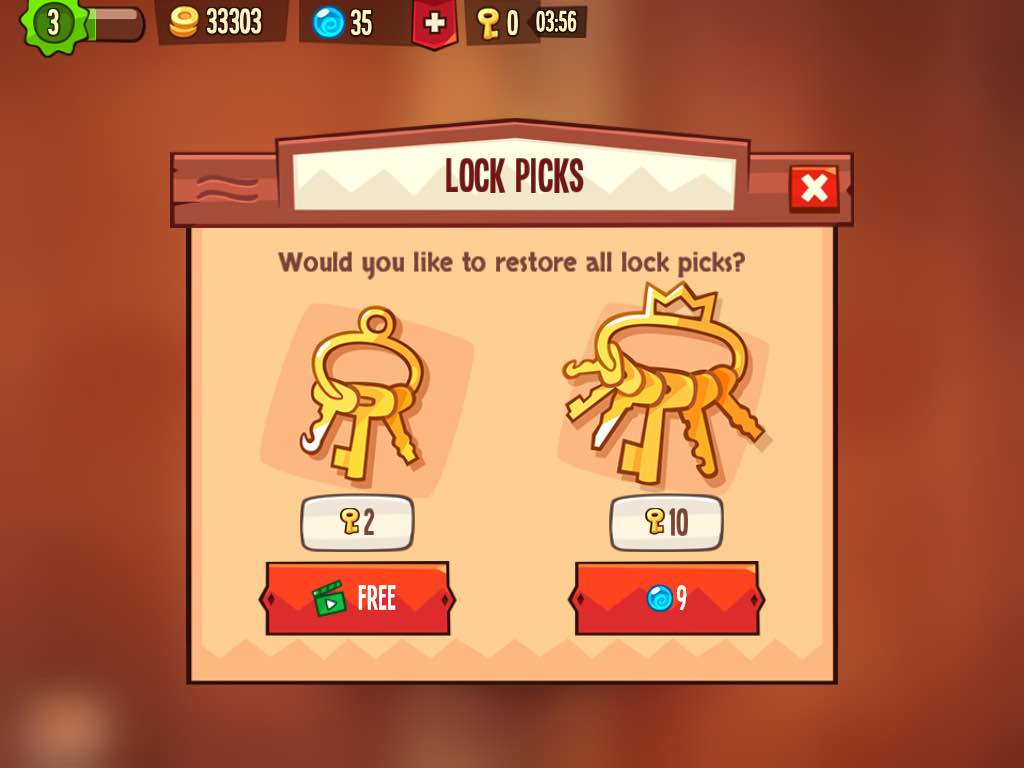
This screen is a high conversion screen for their video ads. Want to keep trying? Watch a video ad. Video ad revenue is becoming more and more interesting in the mobile free to play space, and I completely understand why ZeptoLab wanted to create a pinch point for this type of system. Players then binge watch some videos to get in that “just one more play” feeling.
On top of converting players with video ads, this type of randomized energy system also creates a nice way to balance harder and harder levels. Players can upgrade their key storage limit to be able to reach higher and higher levels. The higher the level, the more locks that the player must attempt. Also, this can create an interesting session per day value curve. ZeptoLab can use metrics like sessions per day and session length in their decision about how lucky the player is. This may be dubious, but this type of “invisible hand” to guide the session design can be very powerful.
In the end, I’m unsure if this system of randomized keys was the best choice for King of Thieves. The system is a unique design and I’m excited to see what the market thinks of it. Just based on the conversion to video ads, I think this could be something to try for other genres.
Step 3:Upgrade Your Base (or Else!)
After the player has looted as many dungeons as they could in that session, they may use theirfound coins to upgrade their dungeon and resource generation.Any coins left over will most likely be stolen, so players attempt to spend every coin they looted. This promotes going for one more looting session, or extending the session to purchase more gold.
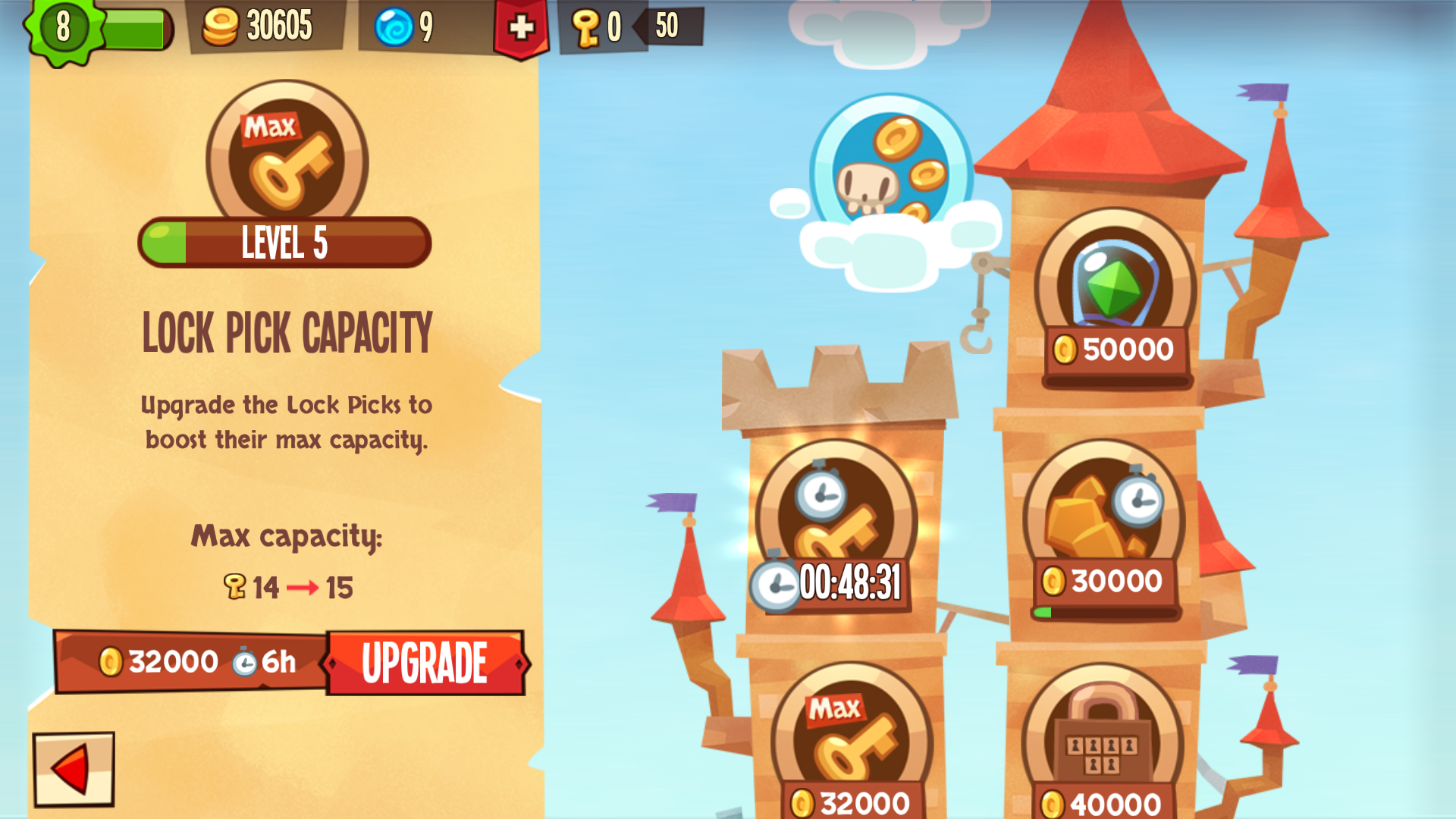
Step 4:Fuse Gems
The key to the meta and progression of the game is fusing of gems. Players collect gems from mines on the world map and by looting other players in the world. The player then takes the gems collected and fuses them in their base.
Fusing usually takes many hours (3+ hours for a usual gem). During this time the gems in this fusing ritual are open for stealing by other players. This is the most anxiety-inducing timer in the game. A gem will be stolen unless they keep the game open or have amazing defences. I spent about two hours on a weekend keeping the game open while watching movies because I was too afraid to close the app and lose my gems.
So why would players opt-in to this nerve wrecking timer?
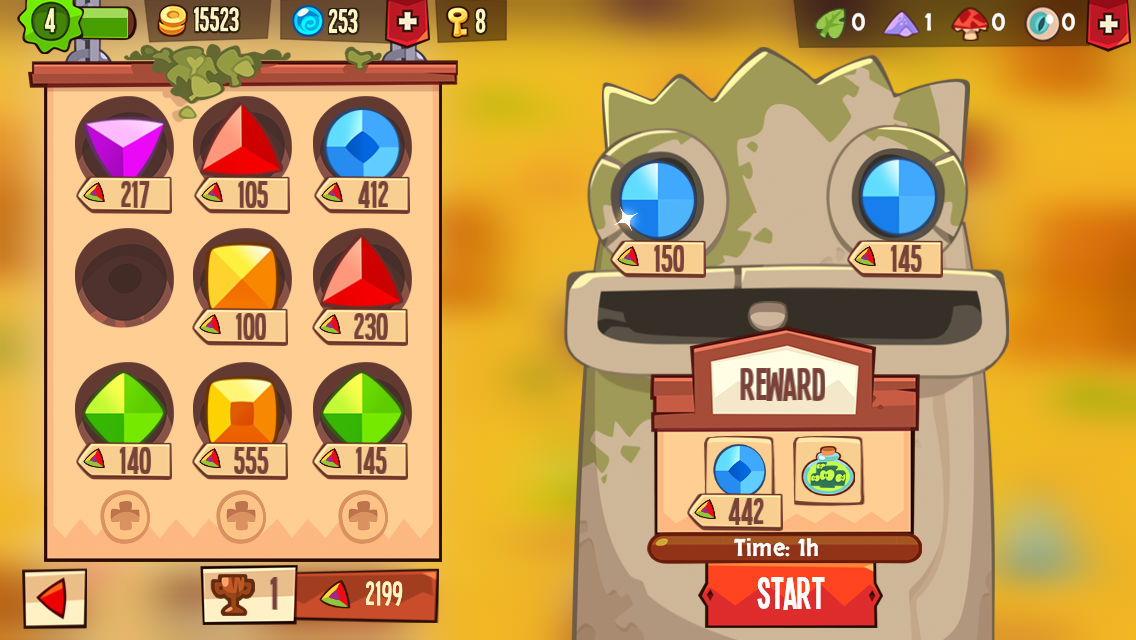
Increasing gem value is the goal ofKing of Thieves. The total value of your gems is how you rank in the game. Players are looking to retain only the highest quality gems (which is shown by a number). However, there are only limited slots the player can have to hold onto gems. So players quickly run out of slots and are forced to fuse gems together to make more slots for higher level gems.
This was a very, very smart design choice by ZeptoLab. This creates a natural cap for progression and creates a lot of very interesting choices for the player. It also creates an obvious high conversion item for monetization: the extra slots for gems. Similar to the builder in Clash of Clans, ZeptoLab has created a high conversion item out of these extra slots. I’m convinced that if they brought this to the forefront and made it cheaper for first time players, this could be a strong conversion item.
Step 5:Optimize Defences
After they’ve completed this loop: collect, attack, upgrade, fuse… what’s left?
Just like in Clash of Clans, players can extend their sessions by optimizing their dungeons defence layout and adjust the positions of traps. This comes with one caveat: the player must be able to beat their own level twice… in a row.
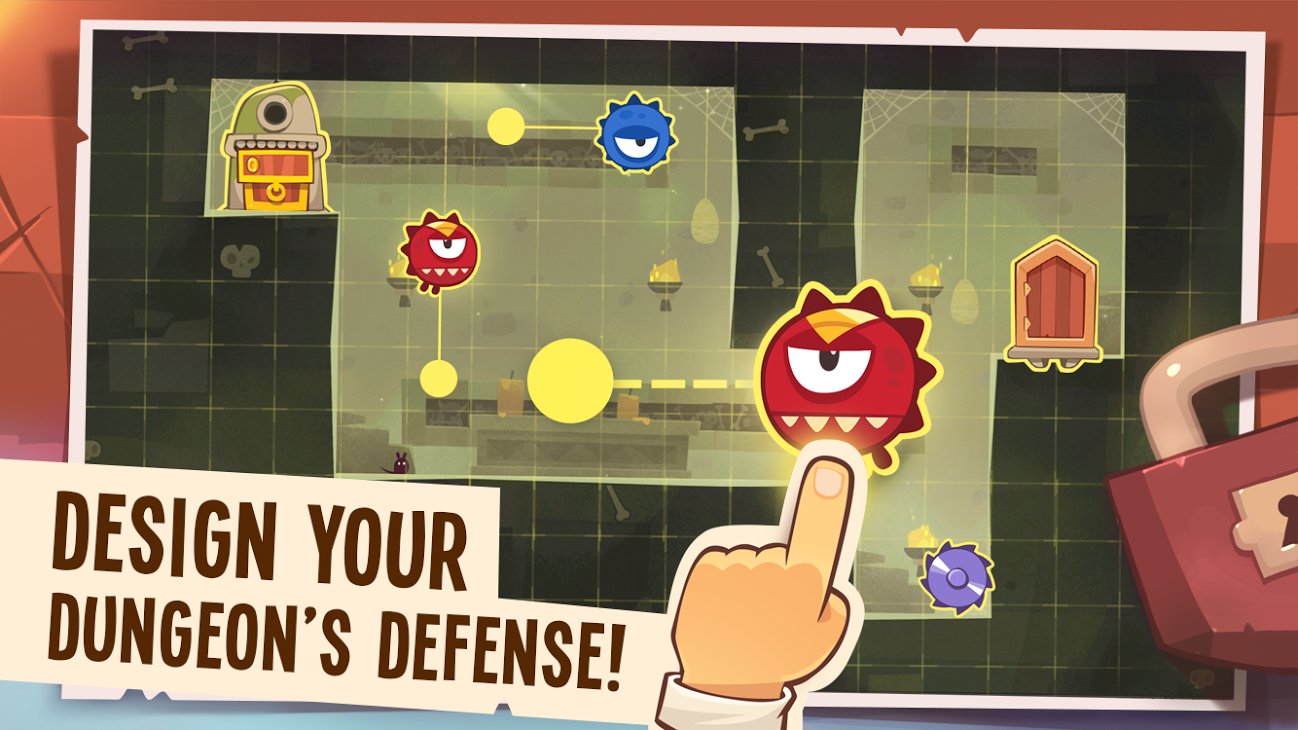
This definitely creates a session extension. I’ve spent well over a half an hour trying to create the optimal dungeon design. All this time was not incentivized by the game, but I wanted the best layout possible. This is exactly what you want to create in your session design. A session extender that players can take as little or as much time with as they wish. The value diminishes over time.
What King of Thieves did right: Social Pressure Mechanics
ZeptoLab shows an excellent example of how to add effective social mechanics to a game.Asking players for help to retrieve lost gems creates social pressure. I feel good about helping my friends, I enjoy when my friends help me out when I’m less active. I rely on my friends to help me optimize my fusing timers. The value of having active friends is apparent.

The league system creates a nice PvP environment with a clear reason to collect gems. Instead of feeling like I’m levelling up just based on some arbitrary number the designer has created for me (ex. collect 5000 gem value in 5 days), I’m competing against a living breathing opponent. I have to be engaged to compete, and the number is always growing so I never feel safe about my position. Sometimes I wish there were ways to specifically steal from other players on the leaderboard you were competing in. This would really drive up the competition.
King of Thieves also uses the same idea of clans in Clash of Clans. King of Thieves wantsyou to join a Guild.While the system is clearly in its infancy, it shows a commitment by ZeptoLab to the future of the game. Guilds are what will really drive the long term retention, and including it in the global launch was important. The mechanics at this point are still too early, but in the coming months I expect that ZeptoLab will build from this base and make very competitive play between Guilds stealing gems from each other. I hope theyfind a waythat Guild members can work together on a dungeon or a raid. It would also be interesting toincentivize Guilds to put their most valuable gems in a vulnerable position. This will really drive competitive gameplay between the Guilds and give a collective goal.
What King of Thieves could improve: Hardcore Skill
In the translation of the Clash of Clans metagame to Super Meat Boy style mechanics, something fundamental was lost. Because platformer gameplay is inherently so skill-based, the translation still feels like a massive amount of skill is required to win.
Clash of Clans (as discussed before)although it requires some mix of stats and skill, the main determinate to win each fight is Stats. If you have an amazing army, you are going to win. If you have spent a ton of time (or money), you will be able to dominate against an opponent lower than you. As you defeat more of these easier players, you will be matched higher and higher in the leaderboards. This will demand more skill, but mostly more stats. This system allows players to “hover” around matchmade opponents that challenge their skill level, but still require high stats. Even if I’m terrible at selecting where my troops go, I’m still progressing, and I may be lower on the leaderboard compared to other players at my stat-level, but I still am progressing.
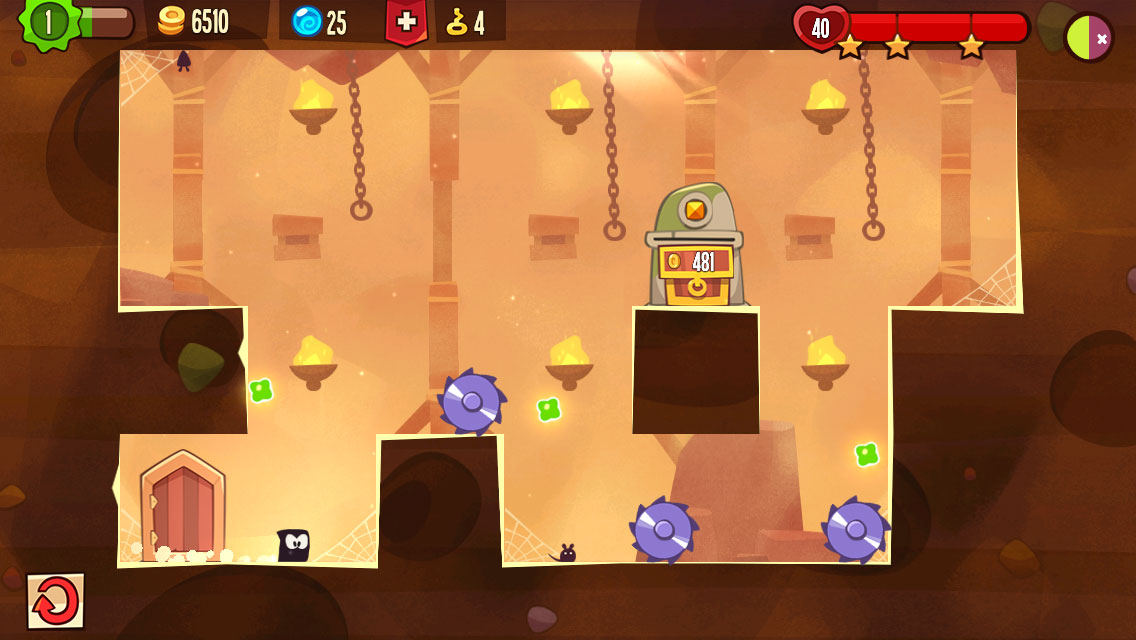
King of Thieves nunca es flexible sobre la cantidad de habilidad que requiere de los jugadores. A medida que avanzas en el juego, sigue exigiendo cada vez más habilidades a tu base de jugadores. Como resultado, el juego se siente muy duro. Los jugadores que llegan al final del juego son un nicho cada vez más pequeño de jugadores altamente calificados. ¿Por qué pasó esto?
A medida que avanza el juego, los jugadores obtienen obstáculos cada vez más difíciles que pueden colocar en su mazmorra. Para crear una mazmorra que sea difícil, el jugador debe superarla él mismo. Como resultado de este sistema, a menos que un jugador sea muy hábil, su mazmorra, independientemente de las defensas, permanecerá en el mismo nivel bajo de dificultad. No hay forma de que un jugador aumente su defensa sin ser mucho mejor en el juego de plataformas.
Hay algunas estadísticas que afectan el juego: el daño de los obstáculos, el equipo y la armadura de tu sombra, la cantidad de llaves que tienes, etc. Pero estas estadísticas claramente tienen menos prioridad que la habilidad. En mi opinión, hay algunos niveles en los que sólo necesitas mucha habilidad. Entonces, a medida que avances en el juego, no importa cuánto tiempo o dinero hayas invertido, alcanzarás niveles en los que no tendrá ningún impacto si no tienes la habilidad. No hay ningún tipo de "flotación" en el emparejamiento que permita a los jugadores sentir el progreso independientemente de su habilidad. Los jugadores con poca habilidad lo sentirán: son castigados perdiendo niveles muy a menudo.
Lo más probable es que esto sea un artefacto al intentar combinar un género de alta habilidad (Super Meat Boy) con Choque de clanes. Si bien esto aleja a los jugadores que esperan un nivel de habilidad más bajo, creo que también atrae aún más a los jugadores altamente calificados. La compensación entre un público objetivo altamente comprometido y un atractivo para un público amplio y flexible es increíblemente difícil de lograr.
Los resultados:
En el lanzamiento, Apple presentó la aplicación. Esto generó cientos de miles de descargas, pero aún no ha alcanzado el Top 100 de ingresos en Estados Unidos. ¿Podrá llegar allí? Esto será extremadamente difícil. Después de una presentación, la única forma de generar el volumen necesario para alcanzar la lista de mayores ingresos es comprando instalaciones. Esto es extremadamente costoso.
Sin embargo, el juego admite una retención temprana muy fuerte y, con más trabajo, puede mejorar su retención a largo plazo. Con mejoras continuas, este juego tiene la posibilidad de alcanzar una posición estable en el Top 250 de recaudación.
Personalmente, aplaudo a ZeptoLab. Este diseño es refrescante. Tuve la sensación de que el espacio gratuito para jugar en dispositivos móviles es incluso más reacio al riesgo que el espacio para consolas o PC. Esto parece un paso en la dirección correcta. Este es un juego en el que ZeptoLab debería estar orgulloso de haber trabajado. Espero que otros desarrolladores de juegos puedan ver este ejemplo sobre cómo innovar en nuevos géneros.
Leave a Reply